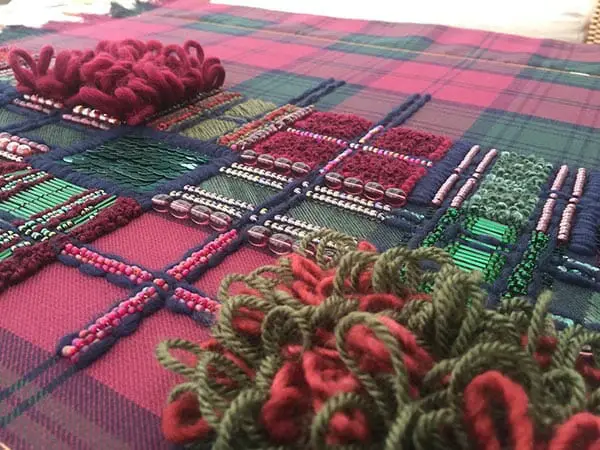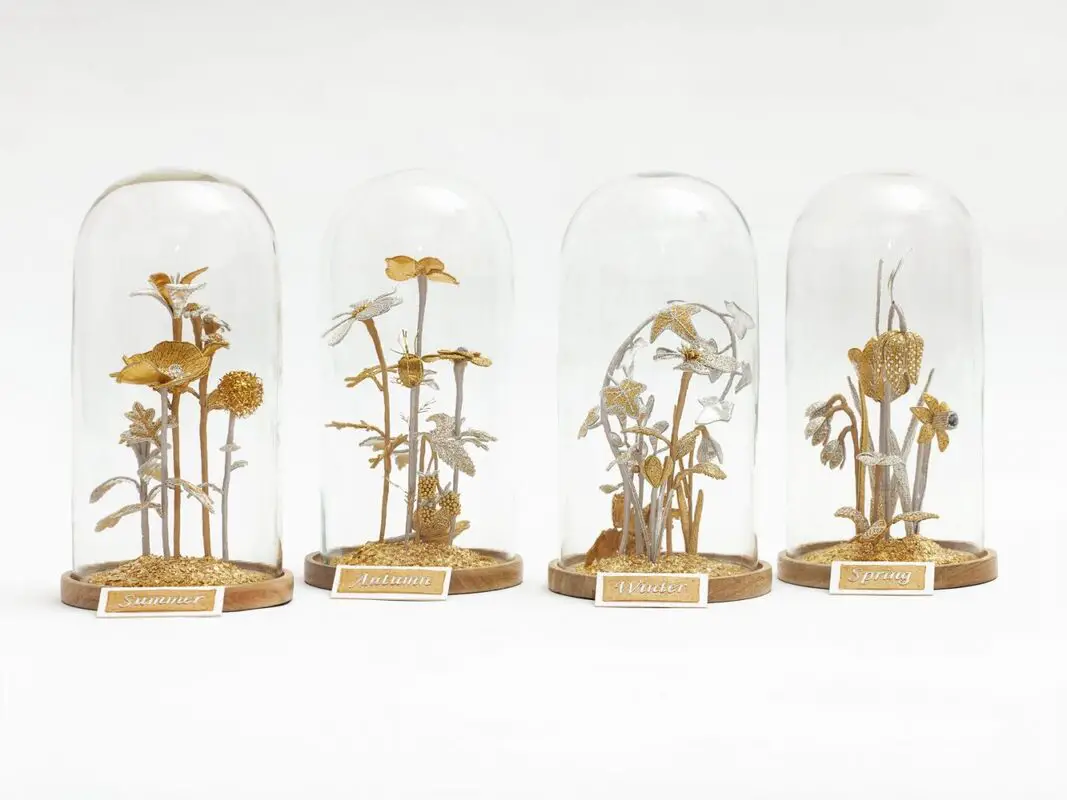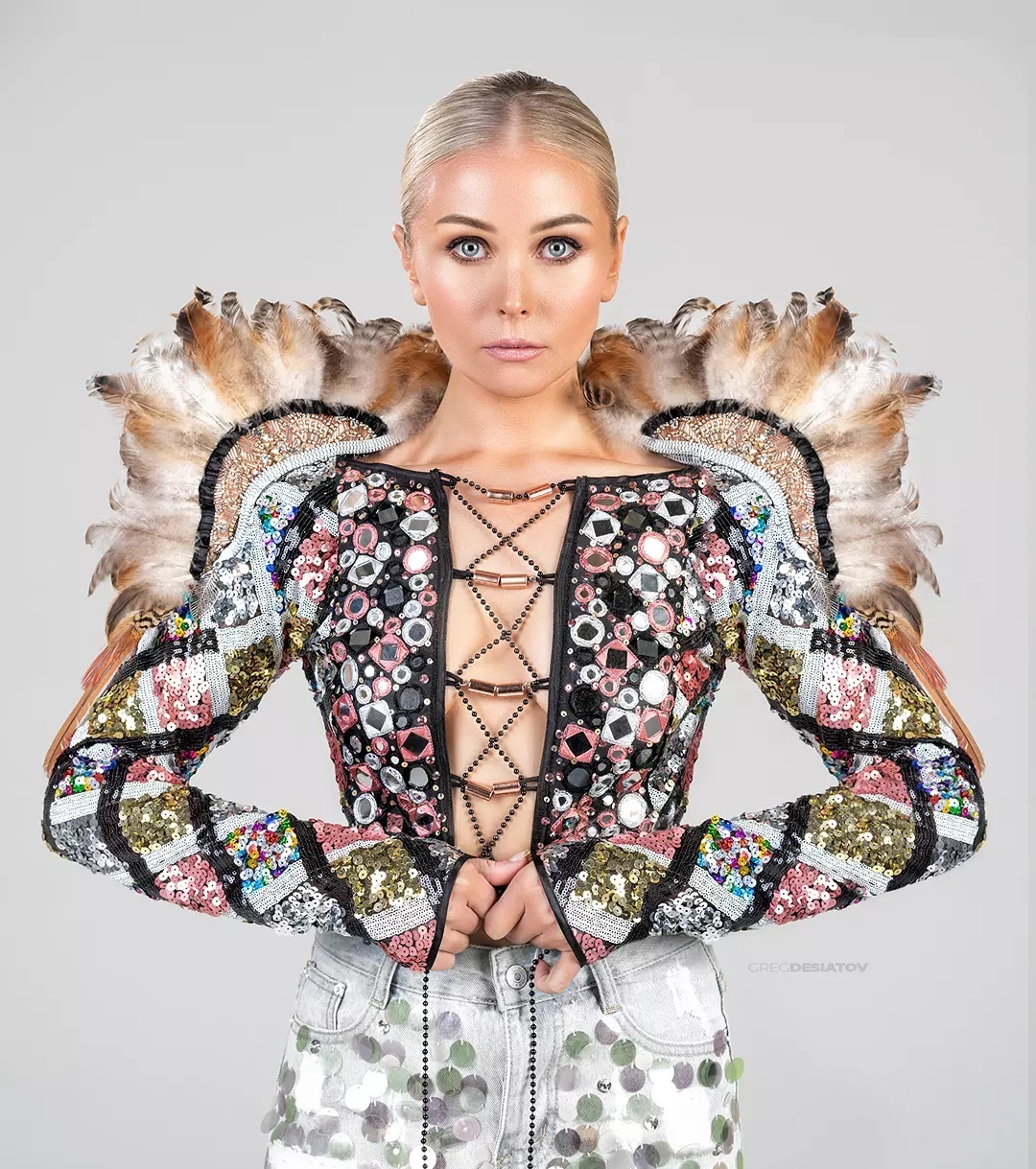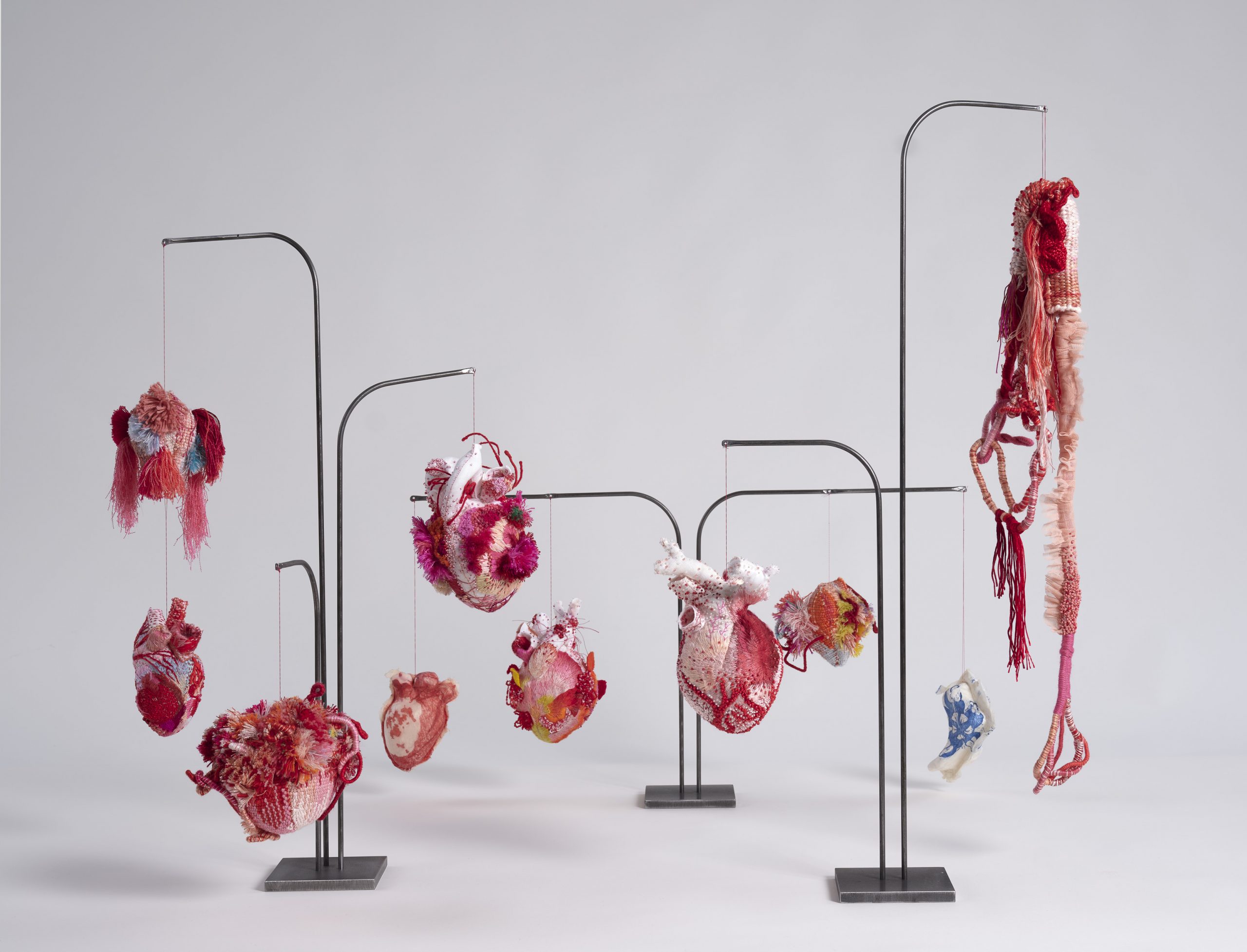Welcome back to Goldworx, I missed last months post and this one is a week later than planned because I’ve been busy embroidering on some exciting projects. Normal service is resumed now!
The life of Marie-Joséphe-Rose Tascher de la Pagerie – better known as Empress Josephine was one filled with scandal, social climbing and lost love.
Her first marriage to Alexandre de Beauharnais, a French political figure and general during the French Revolution, ended in separation before he was guillotined for political reasons. She then began a fiery affair with Napoléon Bonaparte and they were married within five months.
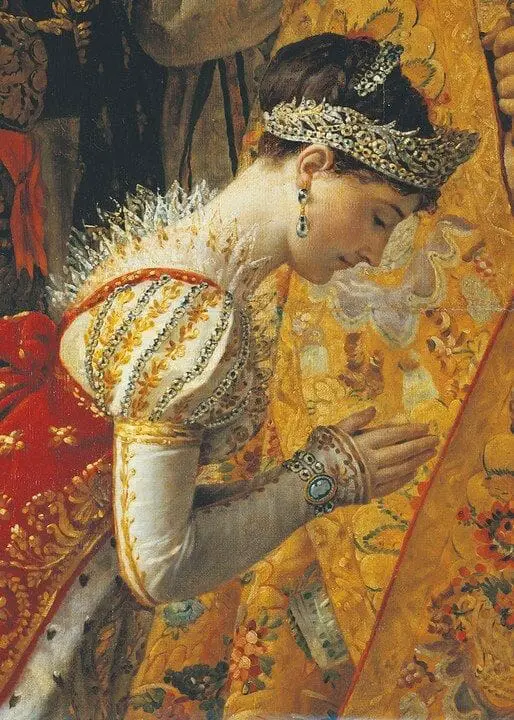
by Jacques-Louis David. Note the gold embroidery on her sleeves and court train.
You may remember that in my first ever blog post I talked about the history of goldwork with a brief mention of Napoléon Bonaparte (you can read that post here). I originally wanted to expand on Napoléon and his goldwork embellished clothes for this post but I got far too distracted when I stumbled across some of Joséphine’s court gowns. Napoléon’s embroidery will have to wait for another post!
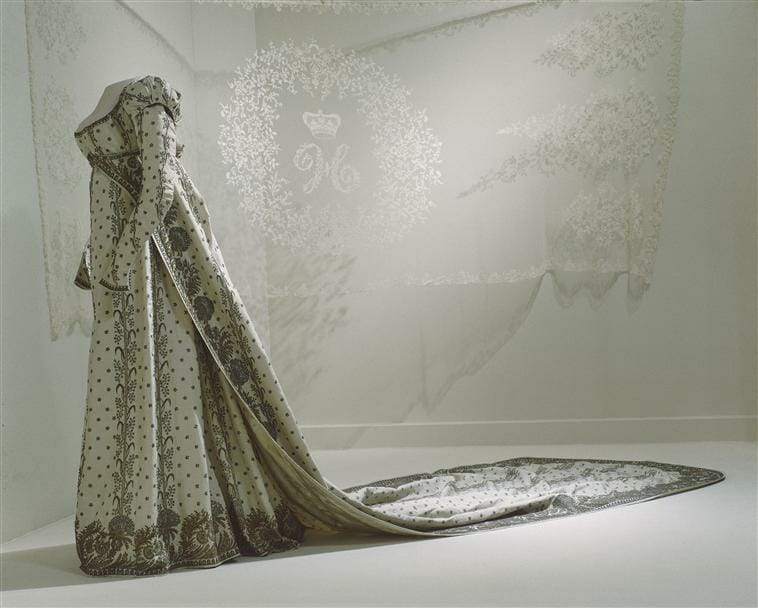
As the newly (self appointed) Emperor of France, Napoléon revived the importance of court traditions. This revival incorporated the recreation of acceptable court dress, which had been defunct since the elaborate and costly court of Louis XVI. Leading by example – Joséphine’s court dresses were exquisite full stunning goldwork embroidery.
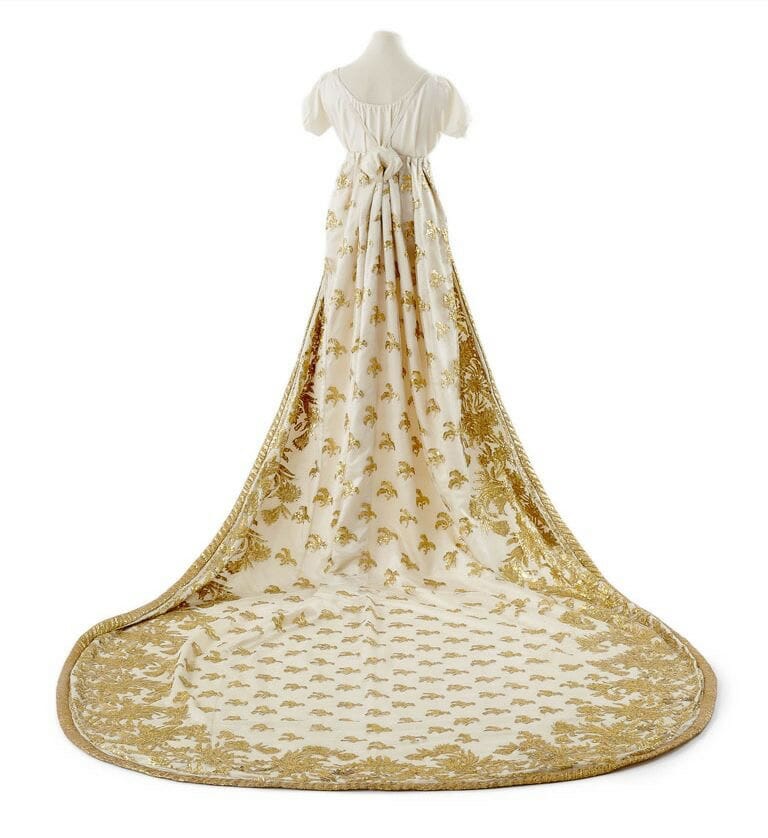
Normally embroidered in gold or silver, ladies’ court trains descended from the shoulders during the Napoléonic era. Regulations specified length and embroidery patterns depending on the wearer’s rank.
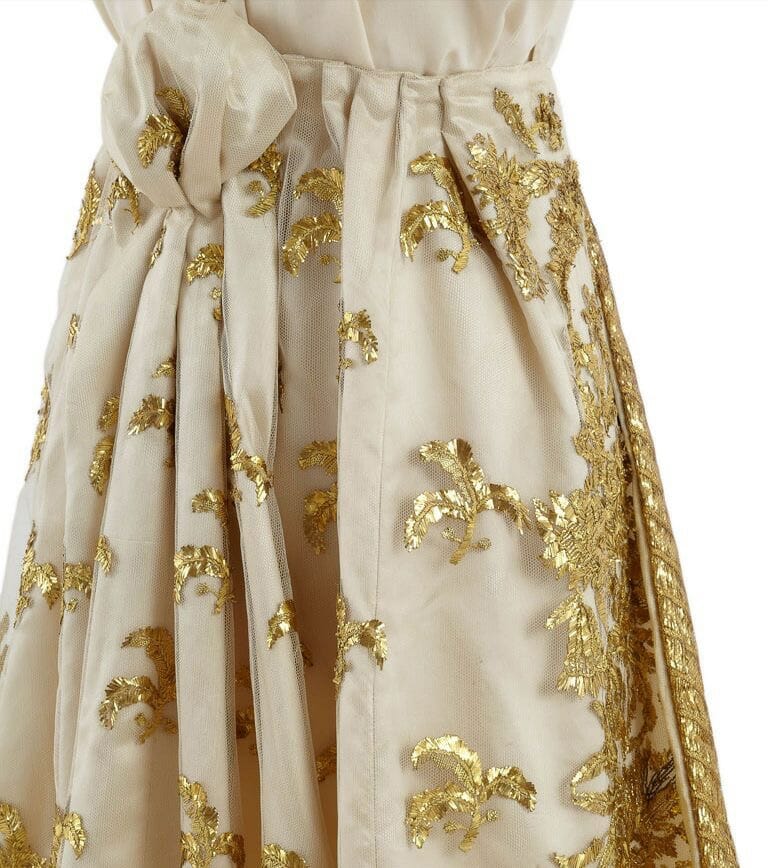
A number of Josephine’s dresses are still intact and on display/ held in various collections and museums around the world. Château Malmaison, the beautiful former home of the Empress Joséphine holds the biggest collection (not surprisingly). According to Malmaison’s records the Empresses’ closet contained 230 dresses, 100 shawls, 369 pairs of stockings, 876 handkerchiefs. Many of her dresses were worn on more than once, but Napoléon apparently hated to see women wearing the same clothes all the time and was known to pull ladies of the court up for not appearing in something new for a while.
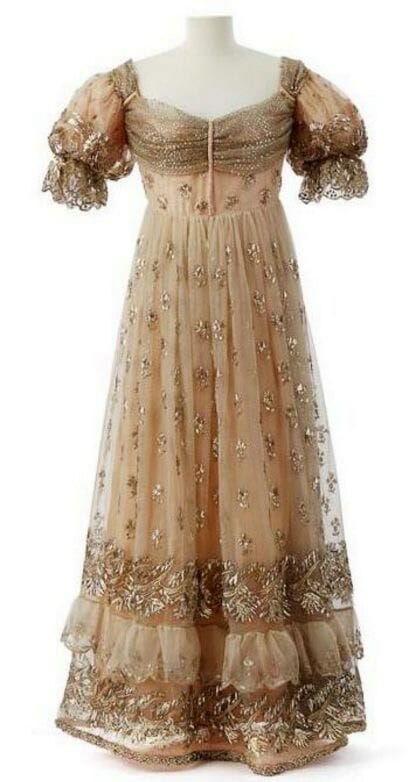
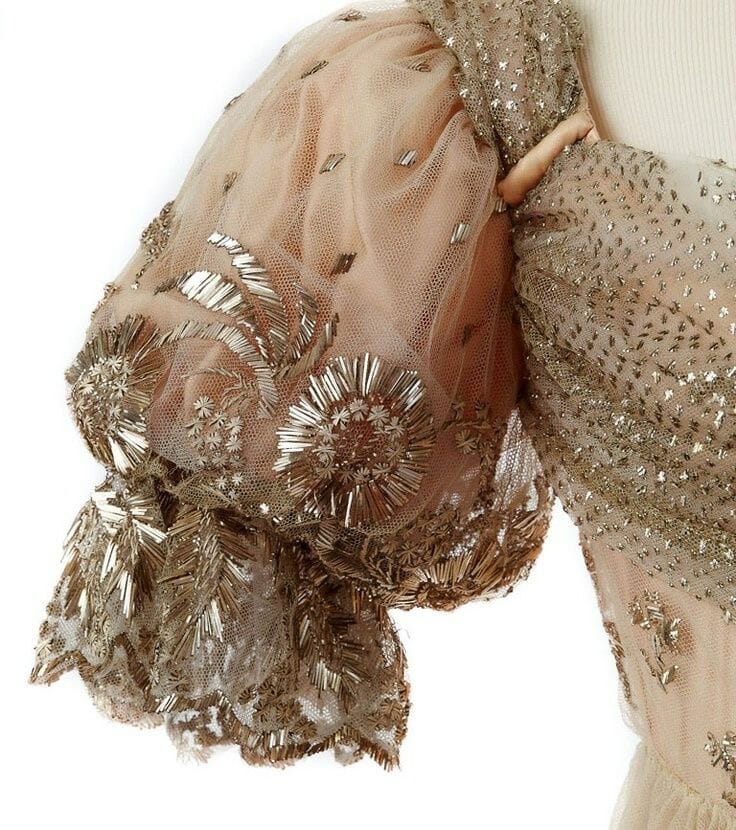
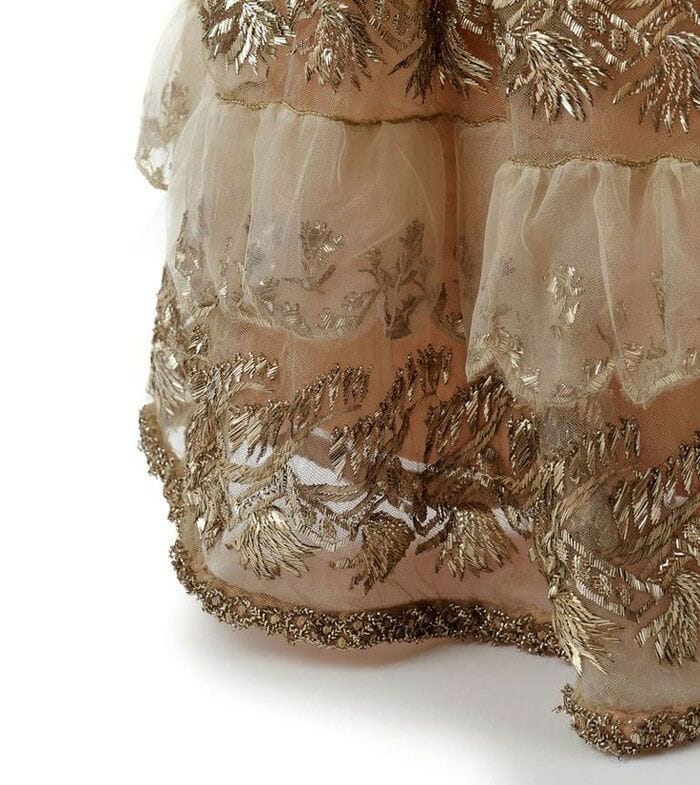
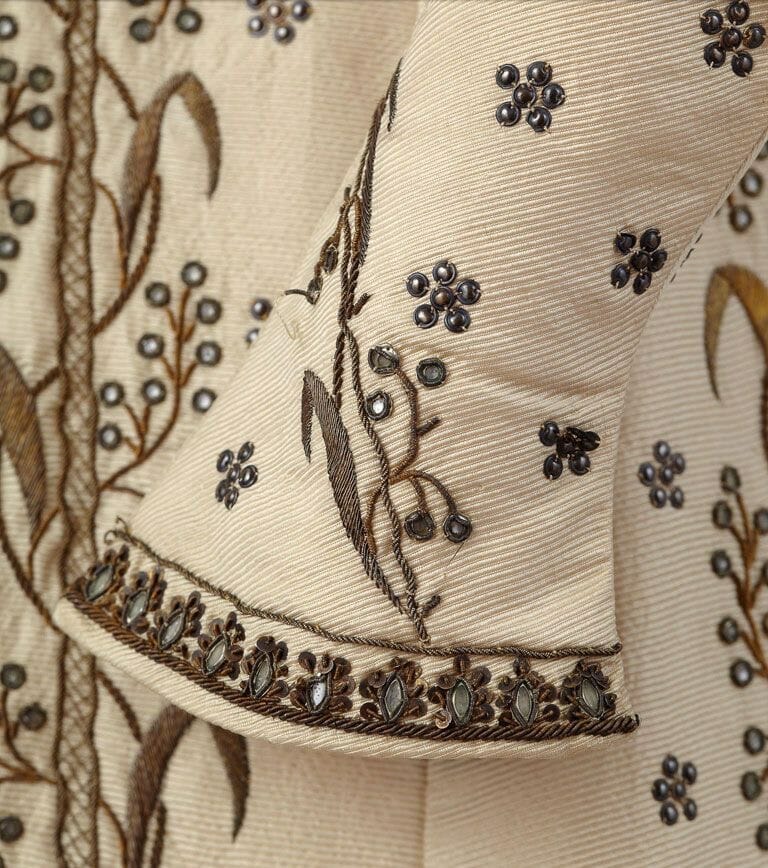
I honestly could go on about Josephine Bonaparte and her embroidered dresses for ages, but I will spare you that. I hope this has given you a bit of an insight into the sumptuousness of French court dress under Napoléon, and if anything a little embroidery envy. See you next month for more Goldworx!



